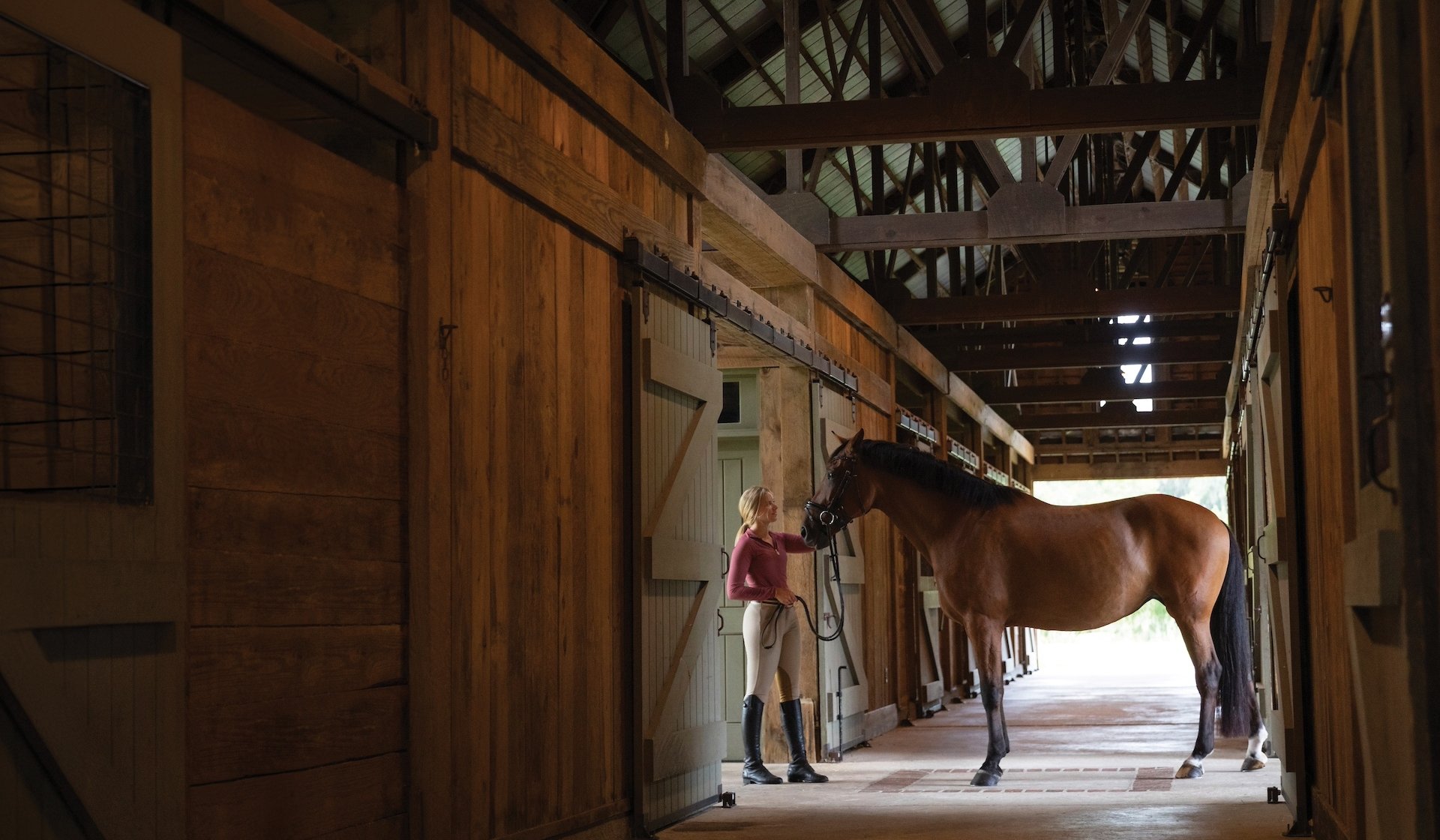The Unbreakable Bond
Harnessing the transformative power of equine connection in therapeutic practices
At first glance, it might seem unlikely that horses—majestic yet silent, powerful yet gentle—could be healers. Yet, for centuries, these animals have offered more than just companionship to their human counterparts. They’ve served as silent partners in a therapeutic dance that promotes emotional and mental well-being for people of all ages.
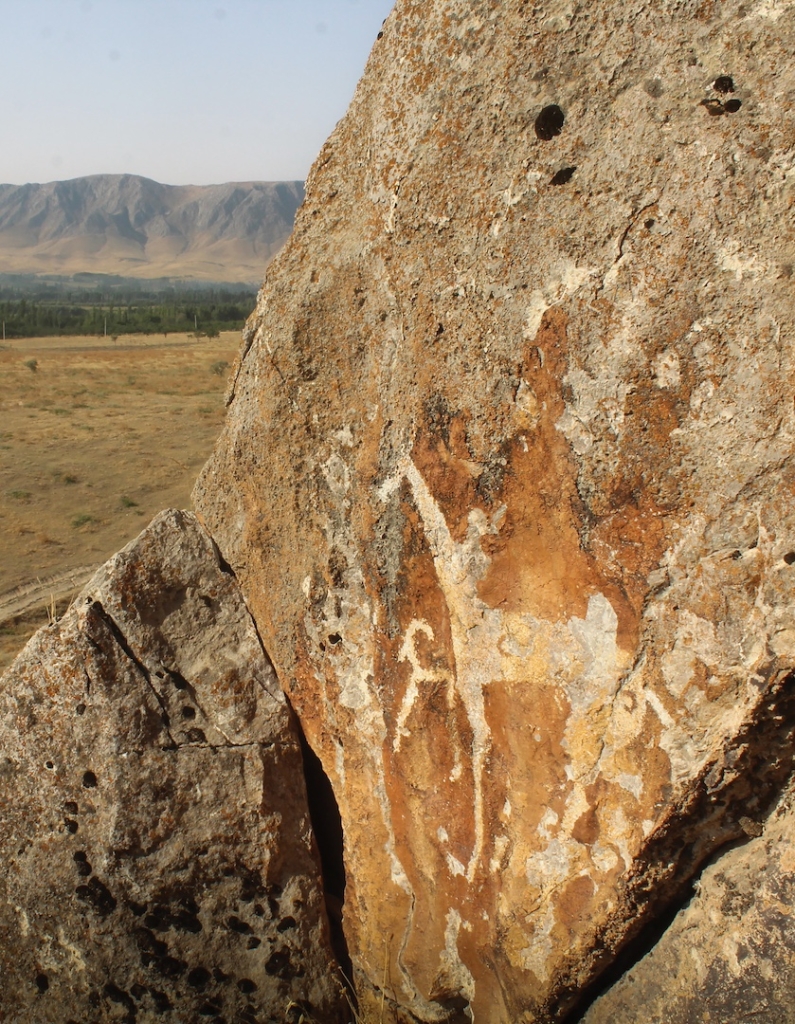
Horse petroglyphs adorn a mountainside in Central Asia’s beautiful Ferghana Valley, home of the famed “Heavenly Horses” of the Silk Road. (Provided by William Taylor)
Equine therapy is more than just riding horses; it’s about harnessing the profound connection between humans and these horses to facilitate healing and growth. And while this relationship dates back thousands of years, new research shows how their connection may be intertwined in profound and transformative ways.
A trot through time
The earliest evidence of this bond can be seen in ancient Eurasian artwork, where horses are depicted as central figures in human society. This initial connection was among humanity’s most important relationships with the animal world.
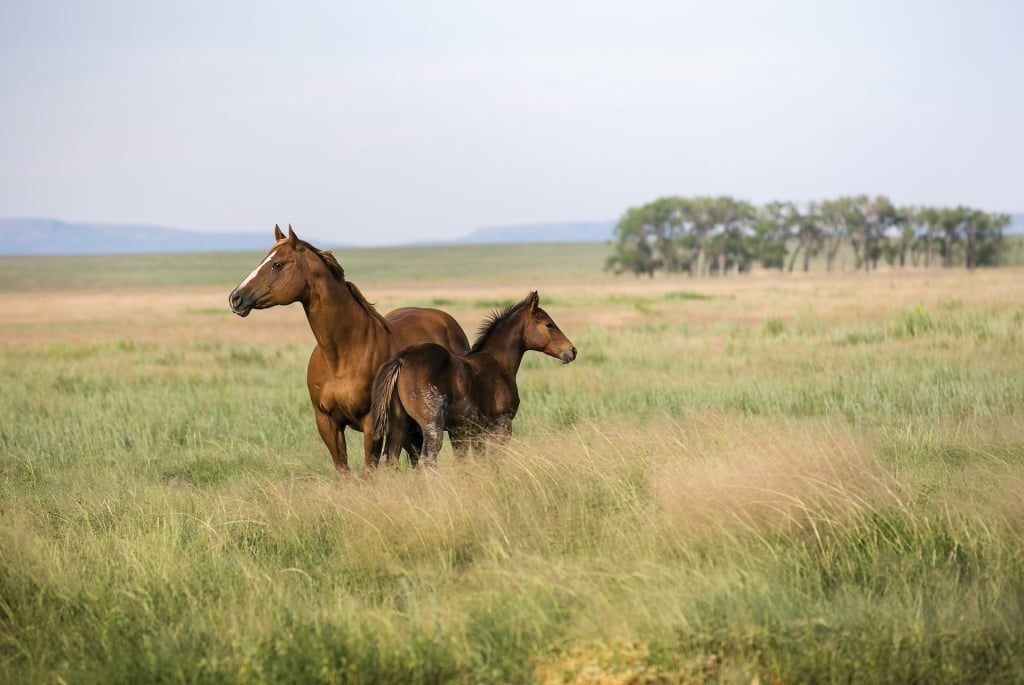
Horses in an open field surrounded by mountains in New Mexico. (Provided by Abigail Boatwright Photography)
William Taylor, archeologist and author of “Hoof Beats: How Horses Shaped Human History,” notes that humans and horses have shared a deep relationship for more than half a million years. The domestication of horses for transport marked a turning point in human history. According to Taylor, “This process was not gradual but more akin to a lightning strike.” The pivotal moment likely occurred in the Black Sea region, in present-day Ukraine.
“People were experimenting with new kinds of vehicles, new animals to use for transport,” Taylor explains. “Somewhere in that process, folks figured out how to take the strongest and fastest animal of the ancient world and harness it into a transport system.”
The domestication of horses revolutionized human civilization. Initially used to pull chariots and carts, horses later became crucial in warfare, agriculture and exploration. Improvements in riding equipment enabled humans to ride horses more reliably, transforming transportation and communication.
Horses facilitated the expansion of empires, the spread of cultures and the development of trade routes. They carried messages across vast distances, drove plows that increased agricultural productivity and enabled armies to move quickly and efficiently. The significance of horses extends beyond practical uses. In many cultures, horses hold a revered status.
The modern equine era
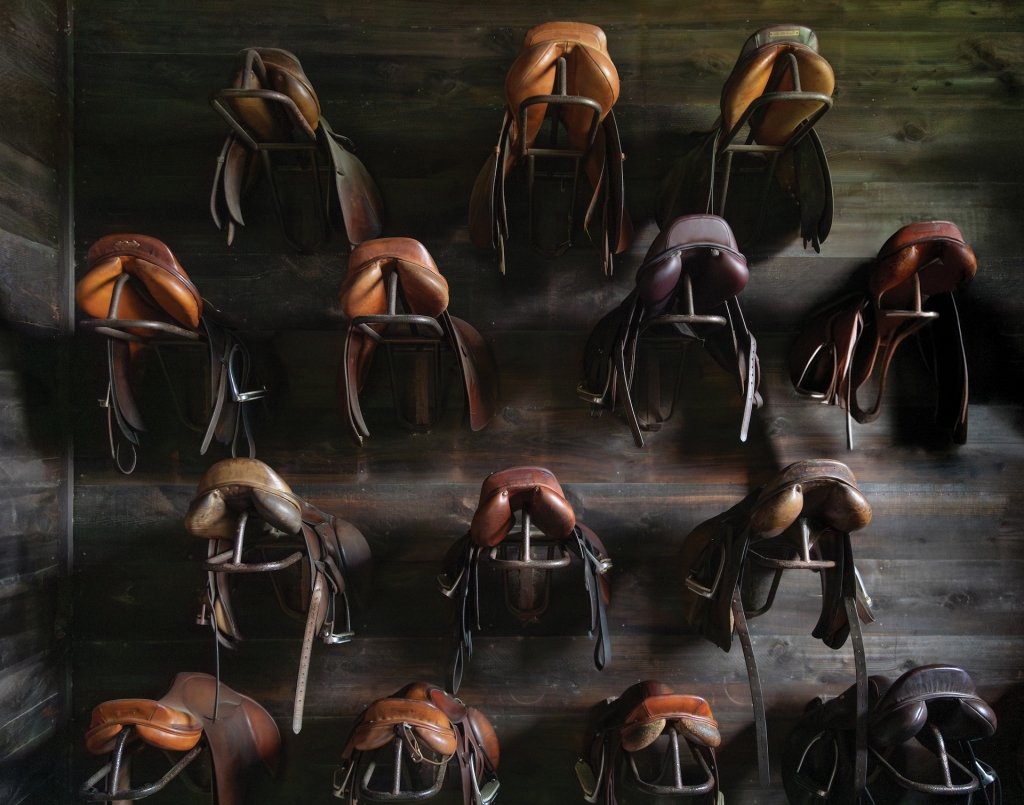 As the relationship between humans and horses evolved, so did our understanding of their therapeutic potential. Equine therapy, also known as equine-assisted therapy or horse therapy, utilizes interactions with horses to promote physical, emotional and mental health. This form of therapy is particularly effective because horses can mirror human emotions, providing non-judgmental feedback and creating a safe space for individuals to process their feelings.
As the relationship between humans and horses evolved, so did our understanding of their therapeutic potential. Equine therapy, also known as equine-assisted therapy or horse therapy, utilizes interactions with horses to promote physical, emotional and mental health. This form of therapy is particularly effective because horses can mirror human emotions, providing non-judgmental feedback and creating a safe space for individuals to process their feelings.
The therapeutic power of horses lies in their ability to reflect human emotions and offer unconditional presence. Studies have shown that the rhythmic movement of a horse’s gait mimics the human walk, aiding in mobility and coordination for those with physical disabilities. For individuals with mental health issues, the presence of a horse can be calming and grounding, reducing symptoms of anxiety and depression.
In the serene pastures of therapeutic riding centers, profound transformations occur. A child with ADHD, in an equine therapy session, might be asked to walk into a pasture and let the horses approach them. The horses’ reactions—whether they approach or shy away—offer teachable moments.
“How a horse reacts can be great talking points and open doors,” says Allison Gross, Executive Director at Wings of Hope, a therapeutic riding center in Fort Worth, Texas. “These moments can allow for open communication that can translate into life skills outside of the barn.”
Equine therapy is not a one-size-fits-all approach. It encompasses several modalities, each tailored to specific needs. Equine-facilitated psychotherapy focuses on mental health, using horses to help clients process emotions and develop coping strategies. Therapeutic riding helps individuals with physical disabilities improve their balance, coordination and muscle strength through riding. Equine-assisted learning uses interactions with horses to teach life skills such as leadership, communication and problem-solving. The versatility and adaptability of equine therapy make it a powerful tool for addressing a wide range of needs.
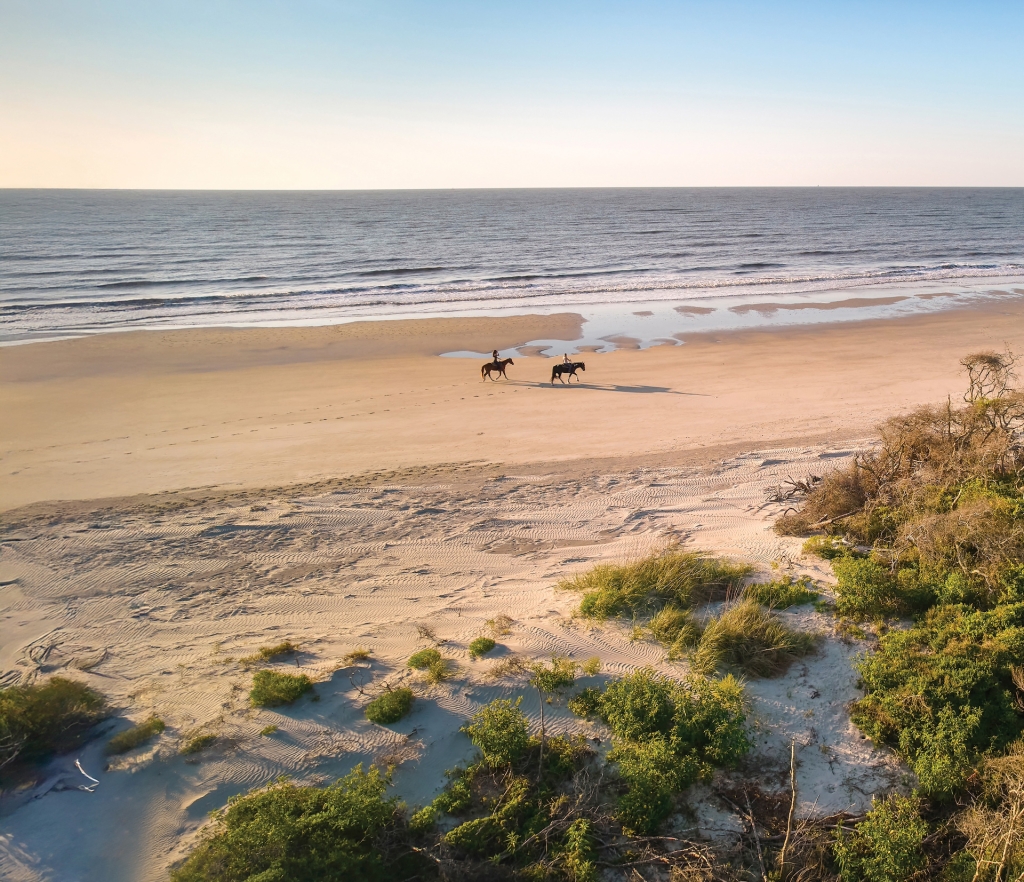
George and Talladega take two guests on a Sea Island Beach Ride.
The Horses of Sea Island
“Members and guests of Sea Island can make memories with some very special horses,” says Allie Zorn, owner of The Stables at Frederica, which provides Sea Island beach and marsh rides, lessons, pony rides and other equestrian activities. Sea Island riding programs are frequented by around 4,000 visitors each year, with every ride offering a chance to make new memories, thanks to the horses.
There are approximately 36 horses that join in on Sea Island activities, many of whom have become celebrities amongst riders. One of the more popular is Woody, a beautiful Gypsy Vanner gelding, who is no stranger to attention. After rides, he is rewarded with his favorite treat, ear scratches. Merle, a well-mannered Paint, looks like he was born for the big screen. His doppelgänger is Hidalgo, from the popular 2004 western film. “Merle may look just like Hidalgo, but he is the smoothest horse to ride,” said Zorn.
Ana is a white Percheron draft horse mare. In her previous work, she was a Disney horse, pulling carriages and trolleys on Main Street USA. At 17 hands tall—that’s 5-foot-six at the shoulder and 2,100 pounds—she is not the tallest horse, but she is substantial. “She’s just as easy as can be on the trails,” Zorn said. “She’s just like riding a couch, she’s so smooth. You can just sit back and enjoy the view.”
George is a Quarter horse, bred in Athens, Georgia, home of the University of Georgia, where he lovingly gets his name. His most frequent Sea Island visits are to Rainbow Island, as he is an excellent tour guide on beach rides.
Talladega is an Appendix Quarter horse who has earned his tenure around the stables. Talladega has been giving rides since 2010, and it is often joked that he could do them blindfolded and still find his favorite bushes to snack on.
These horses are so beloved by returning members and guests that people check-in at the stables just to visit their favorite horses. “Since it was established back in 1928, we get to see fourth and fifth generations coming through the riding program, when their families first started visiting in the 1930s, and they’re still coming today,” Zorn said.
Saddling up
Across the globe, equine therapy draws on the rich traditions of horse cultures worldwide. In places like Mongolia, horses are central to the way of life, living freely yet closely monitored. In Argentina, the Gaucho culture celebrates the art of horse training and polo. The cowboy lifestyle of the American West is marked by trail rides, cattle drives and rodeos. Western riding, with its distinct saddle design and techniques, emphasizes a close partnership between horse and rider, often honed through working with livestock. Each region brings its own unique flavor to the practice, enriching the therapeutic experience.
Recreational horseback riding also offers therapeutic benefits, whether it’s a trail ride in the English countryside or a trail rides through the Pampas lowlands of South America. These activities promote a sense of relaxation, mindfulness and a deep connection with nature.
In the Golden Isles, Sea Island offers a unique setting to bond with horses through a tranquil environment for riders of all levels, with activities ranging from beach rides to riding lessons. “There’s something exceptional about that atmosphere, walking through places that don’t get visited often,” says Allie Zorn, the owner of The Stables at Frederica, which provides Sea Island beach rides, lessons, pony rides and other equestrian activities.
With serene beach rides and secluded wooded estate rides, Sea Island allows guests to explore breathtaking scenery on horseback. These unforgettable experiences not only enhance the therapeutic benefits of equine therapy but also leave a lasting impression, fostering a deep, enduring connection with these remarkable animals.




